Three critters among wildlife in the yard today
Views: 1564
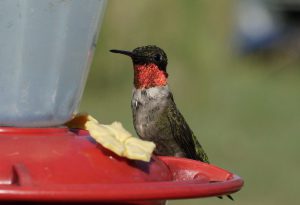
Sometimes having a lack of energy (due to SLE) works in my favor. It forces me to spend some quiet time admiring the wildlife in my yard.
Admittedly, I haven’t accomplished much in my gardens this month, but it doesn’t take much energy to slowly sneak my chair towards the hummingbird feeder until it’s only a few feet in front of me. Sitting very still at that distance allows me to get pictures like this with my macro lens.
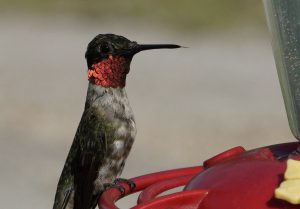
Male Ruby-Throated Hummingbird.
And this one.
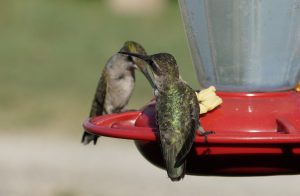
Female Ruby-Throated Hummingbirds.
Just sitting and watching wildlife also allowed me to spot this spider on my sun coleus.
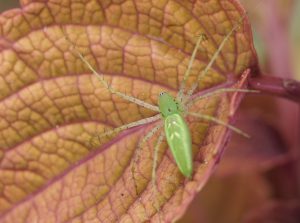
Green Lynx Spider on a coleus leaf.
I’d never seen one like it before. A little detective work on the internet, and I believe it is a Green Lynx Spider, Peucetia viridans, in the family Oxyopidae. Green Lynx Spiders are hunters rather than web builders, and it is probably feeding on the insects attracted to the flowers on my coleus. Usually, these spiders stay on green leaves, so I was quite lucky to catch it on a contrasting color. My favorite fun new fact about Green Lynx Spiders? According to spiderid.com, a Green Lynx Spider is able to spit its venom almost a foot to protect itself. I think that makes it an expectorating champion on par with Gaston from Disney’s Beauty and the Beast (“I’m especially good at expectorating…” [spits] “Ten points for Gaston!”)(And, really, I should apologize, because if you’re familiar with it, you now have that song in your head, too.)
Moving along, I’ll present another resident I discovered today: Megatibicen dorsatus, also known as a Bush Cicada. This species is especially photogenic, I think. (Go here and listen to its song to get Gaston out of your head.) Cicadas are fascinating insects because they spend most of their lives underground, in nymph form. As adults they only live about a month, and this singer was clearly fading. I’d be sad, but this is their natural life cycle, and I still have other cicadas and wildlife singing in my trees. Next year there will be more!
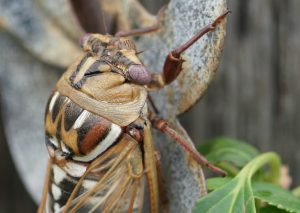
Bush Cicada.
It really is amazing what you can discover in your garden if you just sit still and watch the world around you. I hope you enjoy the photos.
Meet Leslie Miller
Leslie Ann Miller shares 3.5 acres in rural Oklahoma with birds, butterflies and wide variety of animals. She is currently transforming her yard with plantings…
Leslie's Recent Posts
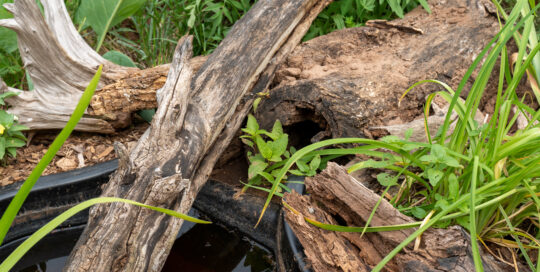
Creating microclimates and microhabitats to benefit wildlife






